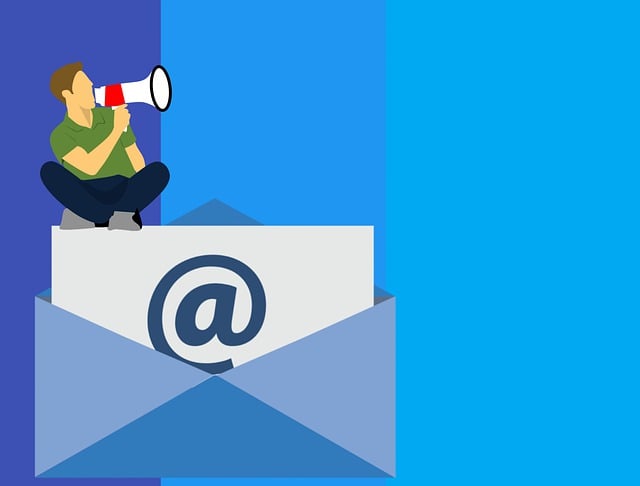Are you ready to take your email marketing for education and e-learning to the next level? It’s time to dive into the world of metrics and discover the key performance indicators that will drive your success.
In this article, we’ll explore the essential email marketing metrics you need to track for maximum impact.
Open rates will give you valuable insights into the effectiveness of your subject lines and overall engagement.
Click-through rates will help you measure how many recipients are engaging with your content and taking action.
Conversion rates are crucial for tracking the number of recipients who are signing up for courses or making purchases.
Bounce rates will alert you to any issues with your email list or sending practices, while unsubscribe rates will indicate whether your content or frequency needs adjustment.
But what about the bottom line? That’s where ROI comes in. By tracking the revenue generated from email-driven sales or conversions, you can calculate the financial impact of your campaigns.
So, let’s dive in and discover the email marketing metrics that will lead you to success in education and e-learning.
Key Takeaways
- Open rates help assess subject line effectiveness and overall engagement in email marketing for education and e-learning.
- Click-through rates track engagement and indicate how well content is capturing attention and interest in the education and e-learning sector.
- Conversion rates provide insights into audience engagement levels and measure how many recipients are taking desired actions in email marketing for education and e-learning.
- Unsubscribe rates signal a need to re-evaluate email content or frequency in order to improve engagement in the education and e-learning industry.
Open Rates: Measure the effectiveness of your email subject lines and overall engagement.
The measurement of open rates allows you, as an educator or e-learning provider, to assess the effectiveness of your email subject lines and the level of engagement among recipients. By tracking open rates, you can determine if your subject lines are compelling enough to entice recipients to open your emails.
Additionally, open rates provide insight into the overall engagement of your audience with your content. If your emails are not being opened, it may indicate a need for improvement in email personalization or email deliverability.
Understanding open rates is crucial for optimizing your email marketing strategy in the education and e-learning industry. It sets the stage for the subsequent section on click-through rates, which track how many recipients are clicking on the links in your emails and engaging with your content.
Click-Through Rates: Track how many recipients are clicking on the links in your emails and engaging with your content.
Keep an eye on how many recipients are getting hooked and taking the bait by clicking on the links in your emails and actively engaging with your content. This click-through rate is a crucial metric to measure the effectiveness of your email marketing efforts in the education and e-learning industry.
To evoke emotion in your audience, consider the following:
-
The satisfaction of seeing high click-through rates, indicating that your content is resonating with recipients and driving them to take action.
-
The fear of low click-through rates, highlighting the need to improve your email content and subject lines to increase engagement.
By tracking click-through rates, you can gain valuable insights into the effectiveness of your email campaigns. These rates provide a clear indication of how well your content is capturing the attention and interest of recipients.
Transitioning to the next section, conversion rates measure how many recipients are taking the desired action, such as signing up for a course or purchasing a product.
Conversion Rates: Measure how many recipients are taking the desired action, such as signing up for a course or purchasing a product.
Boost your conversions by measuring how many recipients are taking the desired action, like signing up for a course or purchasing a product. Tracking the effectiveness of your email marketing campaigns is essential for success in the education and e-learning industry. Conversion rates provide valuable insights into the engagement levels of your audience and help you optimize your strategies accordingly. To give you a better understanding of this metric, here’s a breakdown of a conversion rate table:
| Conversion Rate | Definition | Formula | Importance | Tips |
|---|---|---|---|---|
| Sign-up Rate | Percentage of recipients who sign up for a course or newsletter | Number of sign-ups / Number of emails delivered | Indicates interest and potential leads | Optimize call-to-action buttons |
| Purchase Rate | Percentage of recipients who make a purchase | Number of purchases / Number of emails delivered | Measures revenue generation | Improve product descriptions and offers |
| Click-to-Conversion Rate | Percentage of recipients who click on a link and complete a desired action | Number of conversions / Number of clicks | Measures engagement and effectiveness of landing pages | Optimize landing page design and content |
By monitoring these metrics, you can identify areas for improvement and make data-driven decisions to enhance your email marketing campaigns. Now, let’s delve into the next section about bounce rates: monitoring the number of undeliverable emails, which can indicate potential issues with your email list or sending practices.
Bounce Rates: Monitor the number of emails that were undeliverable or bounced back, indicating potential issues with your email list or sending practices.
Monitor your bounce rates like a detective searching for clues, as they can reveal potential issues with your email list or sending practices. By keeping a close eye on your bounce rates, you can ensure better email deliverability and identify any problems that may be affecting your campaigns.
Here are four key things to consider:
-
Check for invalid email addresses: High bounce rates may indicate that you have outdated or incorrect email addresses in your list.
-
Review your sending practices: Excessive bounces could be a result of sending emails too frequently or using poor email sending practices.
-
Reduce spam complaints: High bounce rates can also be a sign that your emails are being marked as spam. Pay attention to your content and make sure it’s relevant and engaging.
-
Cleanse your email list: Regularly remove inactive or unengaged subscribers to improve deliverability and reduce bounce rates.
Monitoring bounce rates will help you maintain a healthy email list and improve your overall email marketing success.
Now, let’s move on to the next important metric: unsubscribe rates.
Unsubscribe Rates: Keep an eye on the number of recipients who are opting out of your email list, indicating a need to reassess your email content or frequency.
Unsubscribing from your email list can feel like a breakup, signaling a need to rethink your email content or frequency. To prevent subscribers from hitting that dreaded unsubscribe button, it’s important to implement re-engagement strategies and email segmentation. By segmenting your email list based on subscriber preferences or behaviors, you can send more targeted and personalized content, increasing the chances of engagement and reducing unsubscribe rates. Additionally, regularly reviewing and analyzing unsubscribe rates can provide valuable insights into the effectiveness of your email marketing campaigns.
Here is a table that shows the importance of monitoring unsubscribe rates and implementing re-engagement strategies:
| Benefits of Monitoring Unsubscribe Rates | Benefits of Implementing Re-engagement Strategies |
|---|---|
| Helps identify problematic email content | Increases subscriber engagement and satisfaction |
| Indicates the need for email list cleanup | Improves email deliverability and open rates |
| Allows for adjustments to email frequency | Enhances overall email marketing effectiveness |
Tracking unsubscribe rates and implementing re-engagement strategies are crucial steps in optimizing your email marketing campaigns. This will help you maintain a healthy and engaged subscriber base, leading to increased ROI.
Moving on to the next section about ROI, let’s calculate the financial impact of your email marketing campaigns by tracking the revenue generated from email-driven sales or conversions.
ROI (Return on Investment): Calculate the financial impact of your email marketing campaigns by tracking the revenue generated from email-driven sales or conversions
Imagine being able to calculate the financial impact of your email campaigns by tracking the revenue that pours in from email-driven sales or conversions. ROI (Return on Investment) is a critical metric to measure the effectiveness of your email marketing efforts in the education and e-learning industry.
By using different calculation methods, you can determine the success of your campaigns and make data-driven decisions. To calculate ROI, you need to track the revenue generated from email-driven sales or conversions and compare it to the cost of your email marketing activities.
This metric provides valuable insights into the effectiveness of your email engagement, allowing you to optimize your strategies for better results. By focusing on ROI, you can ensure that your email marketing campaigns are not just driving engagement, but also delivering tangible financial returns.
Frequently Asked Questions
How can I improve my open rates in email marketing for education and e-learning?
To improve your open rates in email marketing for education and e-learning, focus on two key areas: engagement and deliverability.
Start by crafting compelling subject lines that pique the reader’s curiosity. Personalize your emails to make them more relevant and engaging.
Segment your email list based on the recipients’ interests and preferences. This will allow you to send targeted content that is more likely to resonate with your audience.
Optimize your email design for mobile devices to ensure a seamless experience. Many people now check their emails on their smartphones, so it’s crucial to make sure your emails are mobile-friendly.
Lastly, regularly test and analyze your email campaigns to identify what works and make data-driven improvements. This will help you understand your audience better and refine your email marketing strategy.
What strategies can I use to increase my click-through rates in email marketing for education and e-learning?
To boost click-through rates in email marketing for education and e-learning, focus on two key strategies.
First, leverage email personalization to make your content more relevant and engaging to each recipient. Tailor the message to their specific interests and needs.
Second, conduct subject line testing to determine which approach resonates best with your audience. Experiment with different styles, lengths, and techniques to optimize open rates and entice readers to click through to your content.
How can I optimize my conversion rates in email marketing for education and e-learning?
To optimize your conversion rates in email marketing for education and e-learning, focus on improving engagement and increasing email deliverability.
Engage your audience by personalizing your messages, creating compelling subject lines, and using clear calls to action.
Segment your email list based on user behavior and tailor your content accordingly.
Additionally, ensure your emails are reaching the inbox by maintaining a clean email list, using strong authentication protocols, and monitoring your deliverability metrics closely.
What are some common reasons for high bounce rates in email marketing for education and e-learning?
If your email marketing for education and e-learning is experiencing high bounce rates, it’s time to take action.
There can be a multitude of reasons for this issue, ranging from outdated email addresses to spam filters.
To improve email deliverability, consider implementing strategies such as regularly cleaning your email list, personalizing your messages, and avoiding spam trigger words.
By doing so, you’ll increase the chances of your emails reaching their intended recipients and achieving higher engagement rates.
How can I reduce unsubscribe rates in email marketing for education and e-learning?
To reduce unsubscribe rates in email marketing for education and e-learning, implement strategies for personalization and follow best practices for email segmentation.
By tailoring your emails to meet the specific needs and interests of your subscribers, you can increase engagement and reduce the likelihood of them opting out.
Segment your email list based on factors such as demographics, past behavior, and preferences to deliver targeted content that resonates with each recipient.
This data-driven approach will help you retain subscribers and improve overall campaign success.
Conclusion
Congratulations on successfully tracking and analyzing your email marketing metrics in the education and e-learning industry.
By monitoring open rates, click-through rates, conversion rates, bounce rates, unsubscribe rates, and ROI, you’ve gained valuable insights into the effectiveness of your campaigns.
These metrics are like a compass, guiding you towards success and helping you navigate through the vast sea of digital marketing.
Just as a compass helps sailors find their way home, these metrics will lead you to higher engagement, increased enrollment, and ultimately, educational success.
Keep harnessing the power of data to steer your email marketing efforts towards greater heights.








